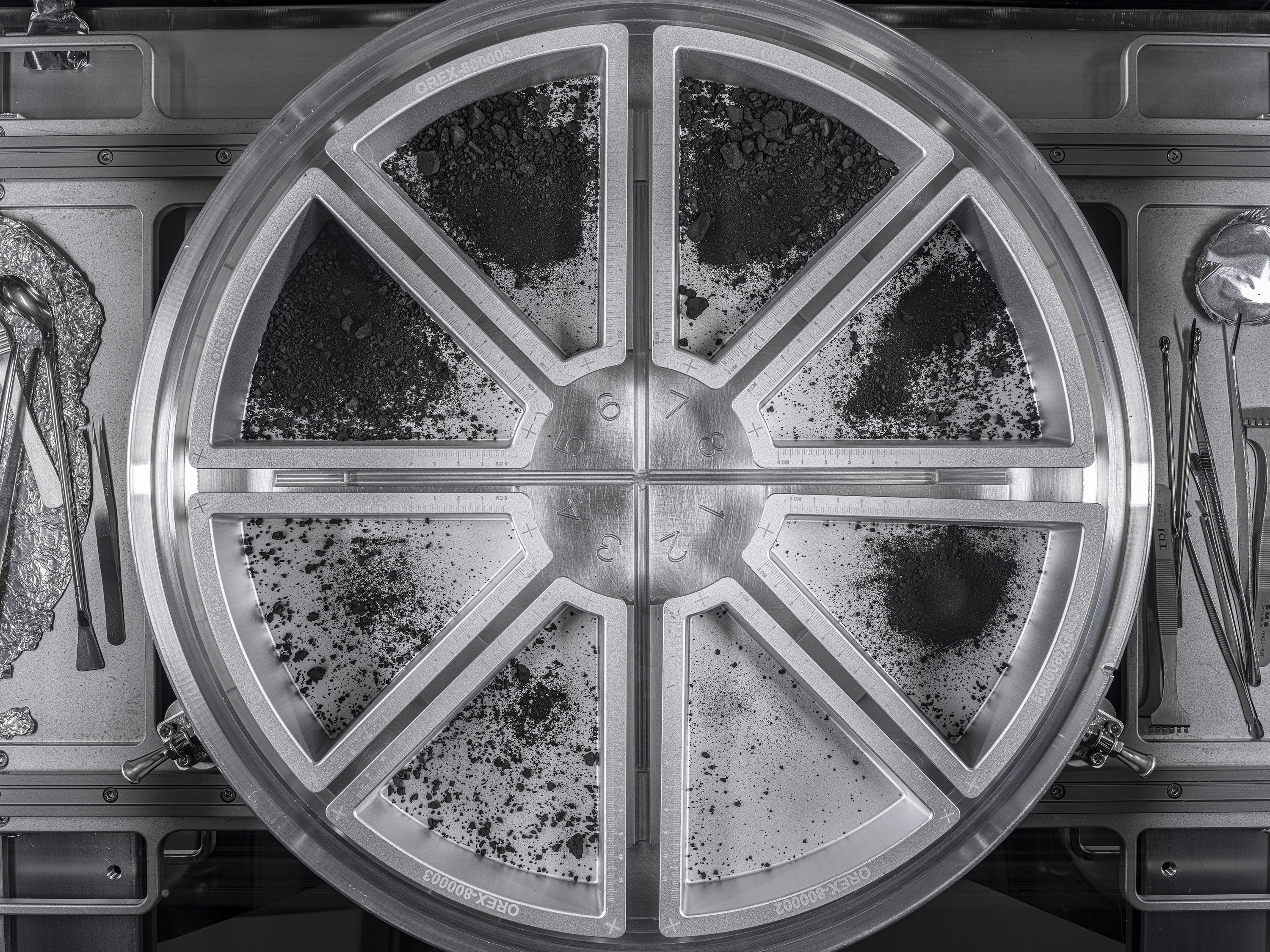NASA's final tally shows spacecraft returned double the amount of asteroid rubble
NASA finally has counted up all the asteroid samples returned by a spacecraft last fall

NASA finally has counted up all the asteroid samples returned by a spacecraft last fall — and it’s double the rubble return goal.
Officials reported Thursday that the Osiris-Rex spacecraft collected 121.6 grams (4.29 ounces) of dust and pebbles from asteroid Bennu. That's just over half a cup and the biggest cosmic haul ever from beyond the moon.
It took NASA longer than expected to pry open the sample container because of stuck fasteners.
The black, carbon-rich samples — the first ever collected from an asteroid by NASA — are stored at a special curation lab at Houston’s Johnson Space Center.
Osiris-Rex returned the samples last September, three years after gathering them from the asteroid. The haul for the $1 billion mission would have been greater, but rocks jammed the lid of the container following the grab and some samples floated away.
The spacecraft is now on its way to another space rock, but that will involve only a flyby with no stop for samples.
___
The Associated Press Health and Science Department receives support from the Howard Hughes Medical Institute’s Science and Educational Media Group. The AP is solely responsible for all content.
Bookmark popover
Removed from bookmarks